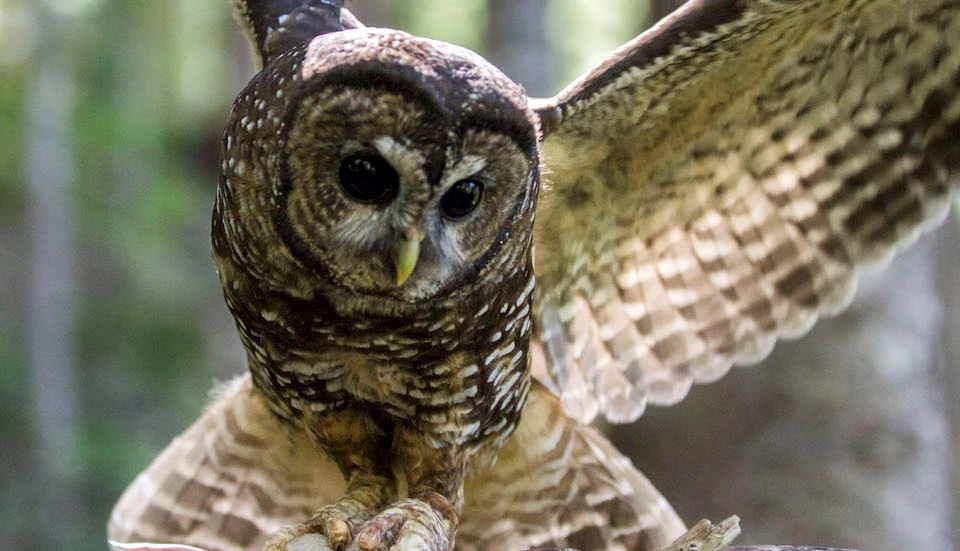
NPS/Emily Brouwer Photo The park is home to a number of bird species. Some of these birds are year-round residents but most occur in the park during specific seasons. The next zone of the park is from 3,500 to 5,000 feet (1,066-1,524 meters) and has mixed forests of western white pine, western hemlock, and Pacific silver fir. Weather, food sources, migration, and breeding season affects the timing and species of birds found in this zone. The subalpine elevation zone extends from 5,000 to 6,500 feet (1,524-1,981 meters) and is where Paradise and Sunrise are located. This zone transitions away from forested terrain into subalpine meadows. Clumps of mixed forest remain among the meadows, made up of primarily subalpine fir, mountain hemlock, Alaska yellow cedar, and white bark pine. There are many birds found here, especially in the summer when the meadows are lush with wildflowers, seeds, and insects. Over 80 square miles of Mount Rainier National Park has an elevation above 6,500 feet (1,981 meters). This final alpine zone is characterized by snowfields, glaciers, and bare rock outcrops. However, many specialized plant communities survive in these exposed areas. Wind also disperses insects and spiders onto snowfields and glaciers, providing food for numerous birds which visit the snowfield. Bird GuideLearn more about common bird species found in Mount Rainier National Park by clicking on one of the images below. A list of common species can also be found in the Mount Rainier Bird Checklist. Photos from the Bird Guide are available in the Birds of Mount Rainier Photo Album. 
Birds of Prey
Birds of prey include eagle, hawk, and owl species found in Mount Rainier National Park. 
Bluebirds, Robins, & Thrushes
Bluebirds, thrushes, and robin bird species found in Mount Rainier National Park. 
Chickadees, Kinglets, & Wrens
Chickadee, kinglet, and wren bird species found in Mount Rainier National Park. 
Corvids
Corvids includes raven and jay bird species found in Mount Rainier National Park. 
Creepers, Nuthatches, & Woodpeckers
Creeper, nuthatch, and woodpecker bird species found in Mount Rainier National Park. 
Finches
Finch bird species found in Mount Rainier National Park. 
Flycatchers
Flycatcher bird species found in Mount Rainier National Park. 
Grouse
Grouse and ptarmigan bird species found in Mount Rainier National Park. 
Hummingbirds
Hummingbird species found in Mount Rainier National Park. 
Larks & Pipits
Lark and pipit bird species found in Mount Rainier National Park. 
Pigeons
Pigeon bird species found in Mount Rainier National Park, 
Sparrows
Sparrow bird species found in Mount Rainier National Park. 
Swallows
Swallow bird species found in Mount Rainier National Park. 
Warblers
Warbler bird species found in Mount Rainier National Park. 
Water Birds
Water birds include dippers, kingfishers, geese, and duck species found in Mount Rainier National Park. 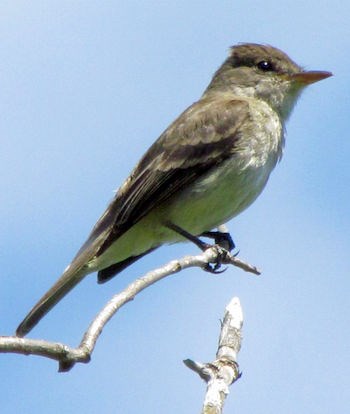
Crow Vecchio Photo Unusual BirdsThe northern spotted owl (Strix occidentalis caurina) is listed on the US Fish & Wildlife Service list of threatened and endangered species, and is the only endangered bird species that permanently inhabits the park. Marbled murrelets (Brachyramphus marmoratus marmoratus) have been observed inside and outside the park and nest in the park. Bald eagles (Haliaeetus leucocephalus) and peregrine falcons (Falco peregrinus) are also listed species, but while they have been sighted in the park, there is no record of either species nesting in the park. They are believed to pass through the park on a migratory basis. There several bird species found in the park which are listed as sensitive, including the northern goshawk (Accipiter gentilis), harlequin duck (Histrionicus histrionicus), and willow flycatcher (Emphidonax traillii brewsteri). There are several birds inhabiting the park which are on the Washington Department of Wildlife, Non-game Program's "List of Species of Special Interest in the State of Washington". The federal and state lists need to be periodically reviewed, and all species occurring in Mount Rainier evaluated and possibly monitored. Reported declines of many resident-migrant birds have stimulated interest in avian population trends across North America. Suggested mechanisms driving these declines include habitat loss (Rappole and McDonald 1994; Sharp 1996; Wilcove et al. 1998), habitat fragmentation (DeSante and George 1994), habitat succession (Sharp 1996), increased nest predation (Morse and Robinson 1999) and nest parasitism, and increased mortality during migration. Bird Research
Source: NPS DataStore Collection 9277. To search for additional information, visit the NPS DataStore. See an Owl? Let us Know!The wildlife crew would love to hear about your owl encounters. Any information you can provide is extremely valuable to us; especially location, date, description of what you saw or heard, and a picture or recording if possible. Below are some photos and tips to help distinguish spotted owls and barred owls in the field. Both species are quite large, measuring 17-20" tall with 40-42" wingspans. In flight they can look remarkably similar, but perched individuals show some key differences. So what if you hear an owl hooting? There's a lot of variation in owl calls and spotted/barred owls can sound alike. Even if you can't see the bird, using a cell phone to record video can result in good enough audio for identification.
To submit your reports please email us. Thanks for your help! Learn more about Spotted Owl monitoring at Mount Rainier National Park. 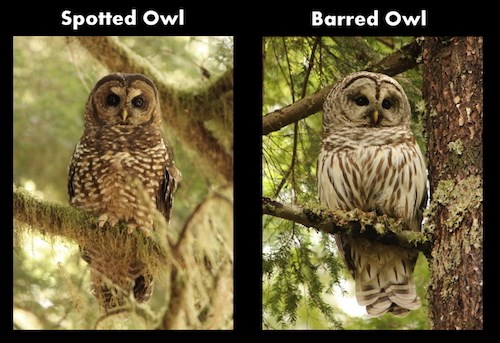
NPS Photo Spotted Owl vs Barred Owl from the Front:
Spotted owls are a chocolate brown color with numerous white spots, while barred owls appear more pale with dark vertical streaking on the belly. If the body is obstructed from view, take a look at the face. Spotted owls have mostly brown feathers on the facial disk (minus the "eyebrows" and "mustache") while barred owl faces appear more gray overall, even in dim forest light.
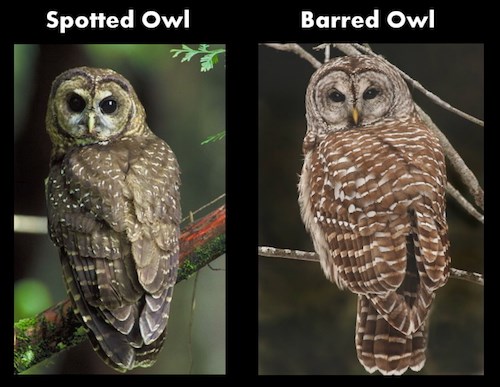
NPS Photo White speckles on spotted owls are much less obvious compared to distinct white horizontal markings on the backs of barred owls. 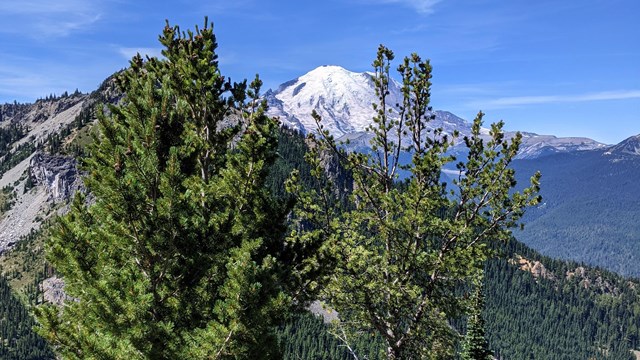
Climate Change Science: Meadows & Forest
Park scientists are studying the effects of climate change, including in the wildflower meadows and forests of Mount Rainier. 
Mammals
Learn more about the mammal species of Mount Rainier National Park. 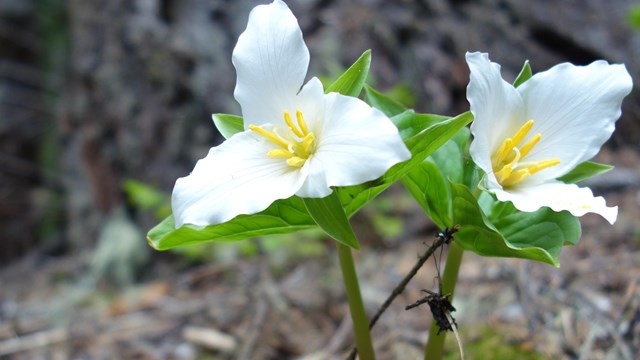
Wildflowers
Identify common wildflowers of Mount Rainier National Park |
Last updated: January 3, 2025
